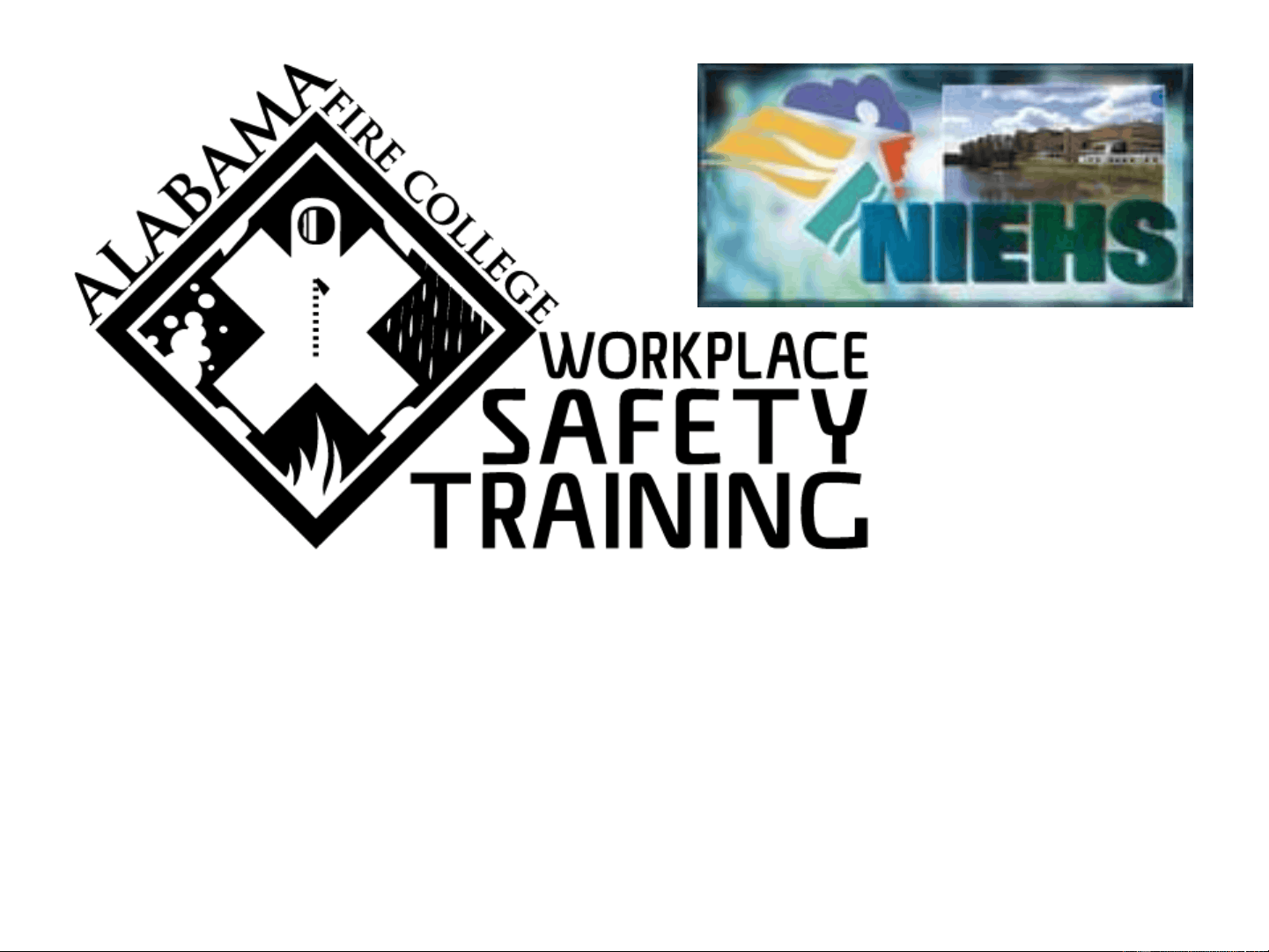
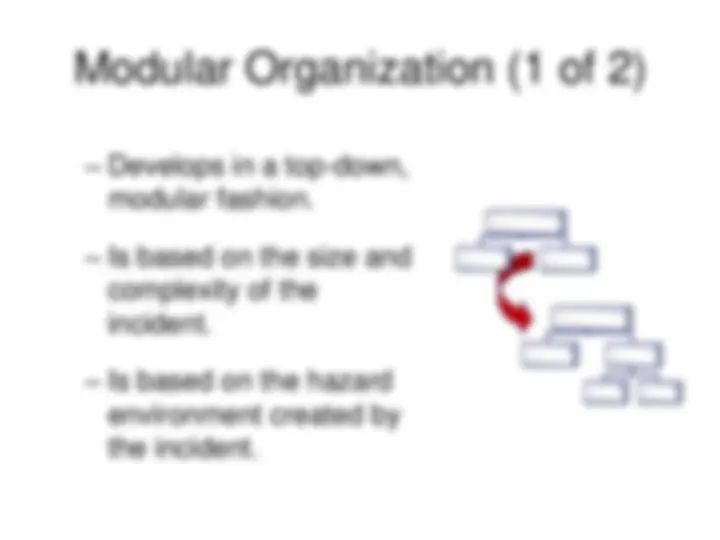
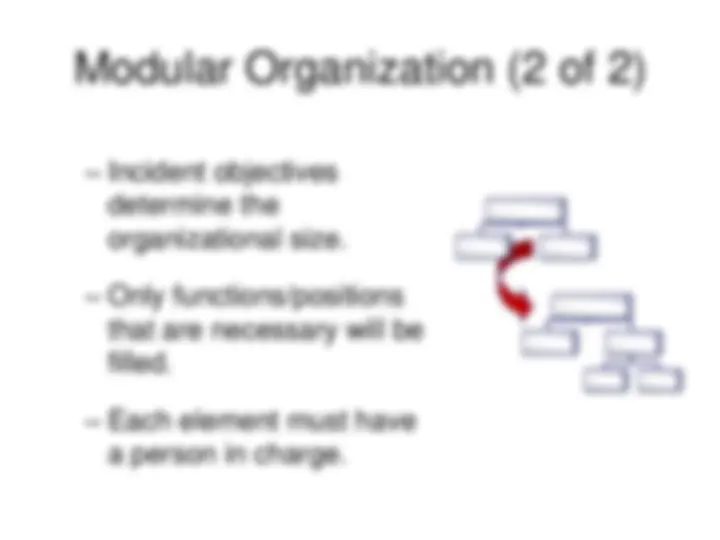

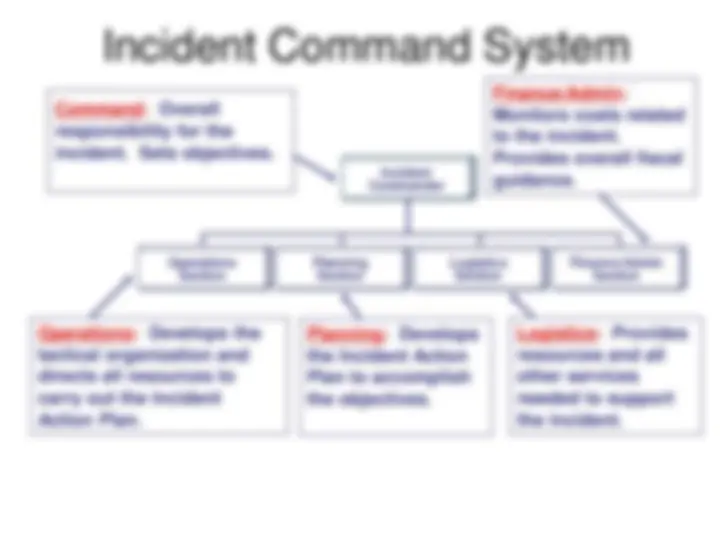
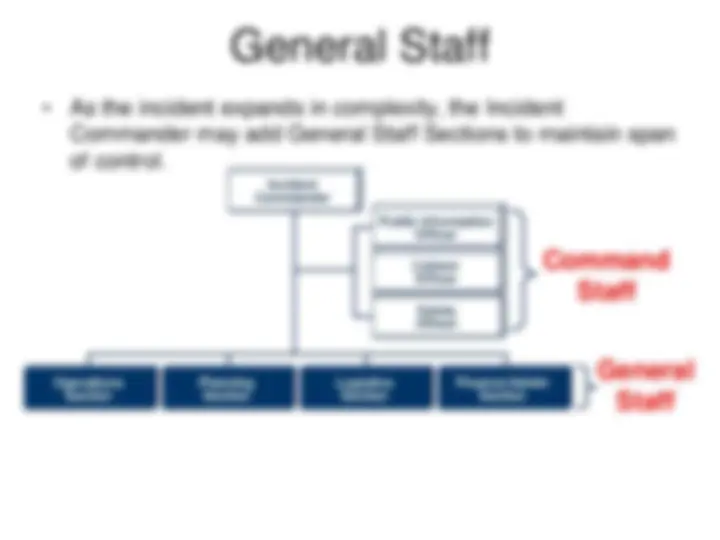
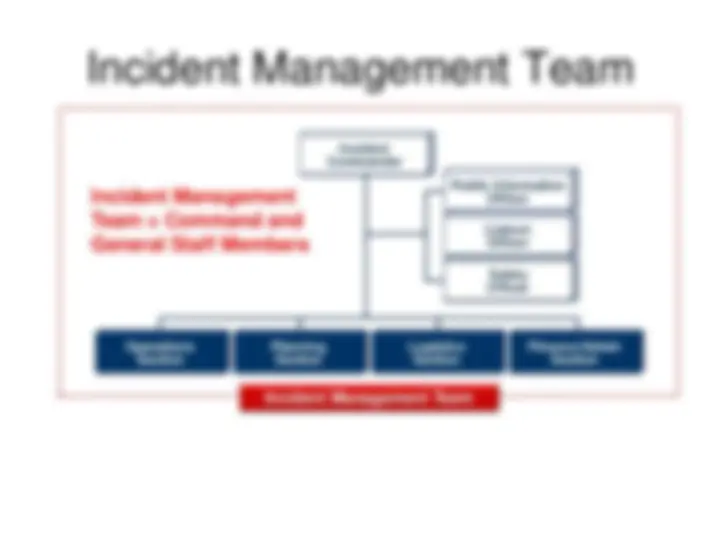

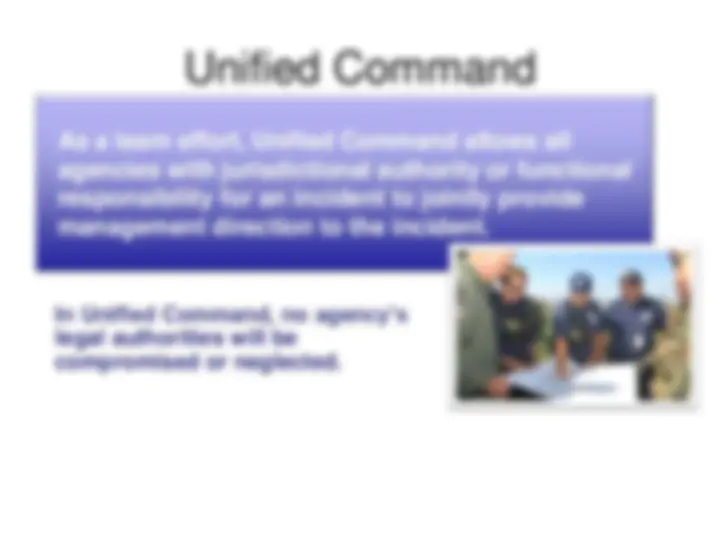
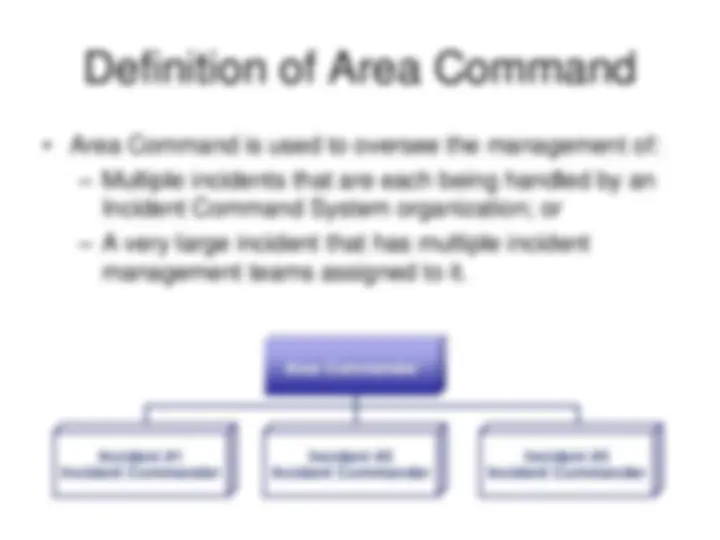


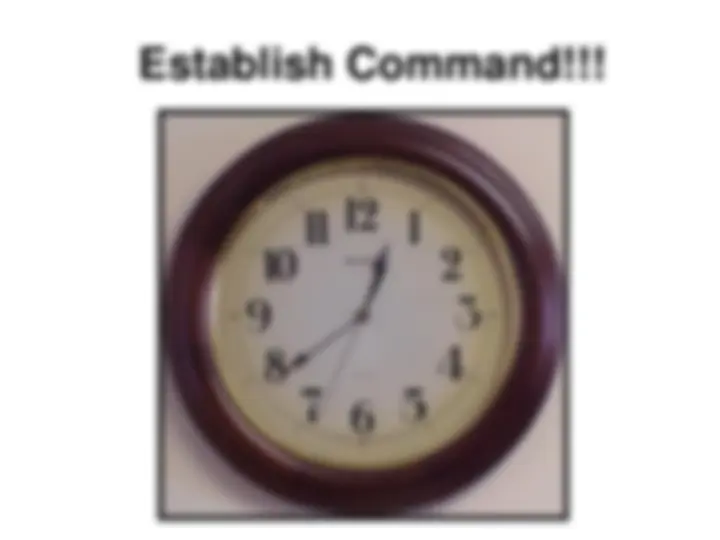



Study with the several resources on Docsity

Earn points by helping other students or get them with a premium plan


Prepare for your exams
Study with the several resources on Docsity

Earn points to download
Earn points by helping other students or get them with a premium plan
Community
Ask the community for help and clear up your study doubts
Discover the best universities in your country according to Docsity users
Free resources
Download our free guides on studying techniques, anxiety management strategies, and thesis advice from Docsity tutors
An overview of the Incident Command System (ICS), focusing on its structure, organization, and communication processes. The ICS is a modular, top-down system designed to manage complex incidents based on their size and hazard environment. It includes various sections such as Operations, Planning, Logistics, and Finance/Admin, each with specific responsibilities. The document uses examples to illustrate how the ICS functions during expanding incidents and the importance of objectives, management by objectives, and unified command.
What you will learn
Typology: Exercises
1 / 21

This page cannot be seen from the preview
Don't miss anything!














Complexity
Incident Commander
Public Information Officer Safety Officer Liaison Officer
Search Group
Group
Investigation Group
Incident Commander
Public Information Officer Safety Officer Liaison Officer
Planning Section
Operations Section
Logistics Section
Incident Management Team
Incident Management
Team = Command and
General Staff Members
Operations
Law
Enforcement
Unified Command Structure
EMS
Emergency
Ops Center
(EOC)
Area
Command
Incident
Commander
Incident
Commander
Incident
Commander
A System... Not a Facility
On-Scene
Command Dispatch Coordination
Resource Centers
Emergency
Operations
Centers
Coordination
Entities/
Groups
Multiagency Coordination System